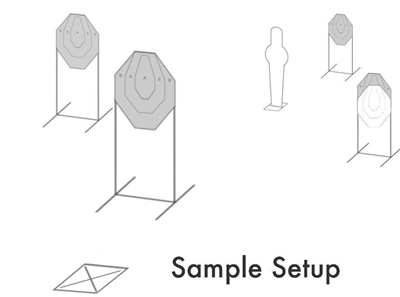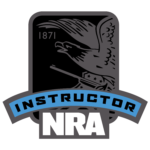Target Transitions
Aug 24, 2021 // By:admin // No Comment
In the arena of self defense, there is a process of moving your aim from one threat to another.
This is called a “target transition” and is the process and skill of adjusting your aim consistently from one target to another without jacking up your sight alignment so that as soon as you are “over” the new target, your sight picture is established without having to waste time adjusting your sight alignment. (I do a basic warmup for this on this post)
This is not the same as scanning (looking and turning) after eliminating a target … scanning is done:
- once known targets are eliminated
- firearm is pulled back to a compressed position to the torso
 How is this done ?
How is this done ?
by holding your head, neck, shoulders, and upper body in “locked” position (sight alignment between dominant eye, rear sight, and front sight is locked in) and twisting at the waist to move to the new target (rather like a tank turret) … only waist, legs, and feet move.
double tap transitions would sound like: bang, bang, brief pause …, bang, bang
(the brief pause is the short time it takes to transition to the new target once the muzzle flipped on the second shot of the first target)
a single shot, three target transition: bang, brief pause …, bang, brief pause …, bang
pointers:
- practice accurate double and triple taps first
- dry fire, then live fire
- live fire will introduce the element of recoil management to your shooting which reinforces the idea of followthrough even on single shots (returning sight alignment to the bulleye after the muzzle flip)
- practice slowly transitioning from one target to another, without shooting
- just learn how to not turn your head, shoulders, wrists, or hands when doing so
- twisting only at waist, (involving leg movement only when new target is beyong comfort level of angle available from existing stance position)
- eyes CAN move without moving your head and this is important because your eyes must arrive at new target before the muzzle does.
- slowly increase speed of movement
- use of live ammo is last step
- remember to wait till muzzle flips from recoil before moving to next target
- slowly at first (safety first)
- remember, you are doing all this to build a skill set that is based upon muscle memory
- slowly, precisely, being aware of everything your body is doing
- do not ever sacrifice form for speed
- both eyes open at all times (this is a defensive skill) you need complete peripheral vision in operation so practice with both eyes open as well
- now that that is functional, add a process of moving off the “x” during the transition
- repeat steps 1-4 as you do this since this is a “new” skill and should be practiced as safely as possible
- now you can also adjust your targets for variable distance, and height from ground as well as angle (to exercise your depth of field factoring into your shooting as well) (make sure you do not place your targets too high relative to any backstops or berms … most outdoor ranges require 50% of berm height)





